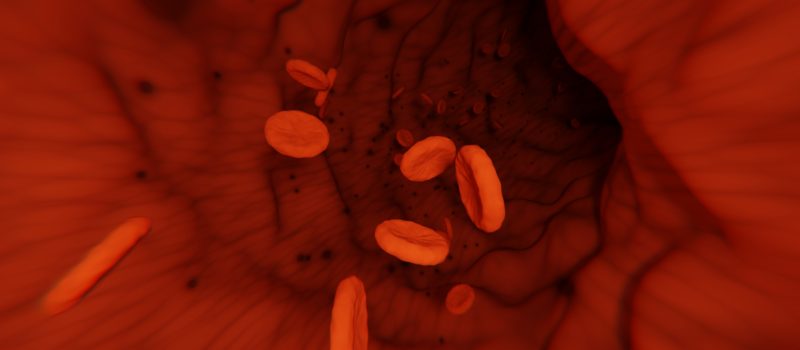
PRP – Platelet Rich Plasma: is it worth it?
We are asked almost daily about PRP. In this article we will do our best to spell out the treatment, the hype and whether or not the appointments pan out for those who are looking for the magic bullet.
The Treatment
PRP treatment is the injection of a product made up of cells that are naturally produced by yourself. Your blood is made up of plasma, white cells, red cells and platelets. Two of these components are the focus of Platelet rich Plasma.
Plasma: Our blood is made up primarily of a liquid that we call plasma. Plasma is the primary component of our blood making up more than half (55%) of its content. When separated from the rest of the blood, plasma is a light yellow liquid and its role is to carry water, salts and enzymes.
The main role of plasma is to take nutrients, hormones, and proteins to the parts of the body that need it. Cells also put their waste products into the plasma. The plasma then helps remove this waste from the body. Blood plasma also carries “all parts of the blood” through your circulatory system. Essentially, it is a transportation medium.
Platelets: In addition to the plasma, white and red blood cells in the blood are cells called platelets. Their primary roll is to react to bleeding (along with other factors) from blood vessel injury by clumping to form a clot. However, in addition to clotting, the platelets also contain hundreds of proteins which include growth factors that play a major role in the healing of injuries.
“Platelets are rapidly deployed to sites of injury or infection, and potentially modulate inflammatory processes by interacting with leukocytes and by secreting cytokines, chemokines and other inflammatory mediators.[33][34][35][36][37] Platelets also secrete platelet-derived growth factor (PDGF).” https://en.wikipedia.org/wiki/Platelet#Inflammation
PRP
To develop a PRP solution, Doctors withdraw your blood and place it into a centrifuge. Note: this is the most common way, but there are other ways and there is no current standard. In fact, there is no current consensus that I can find on the actual centrifugation process. Nonetheless, by spinning the blood, the platelets separate to the top and are concentrated. In this concentration of platelets the amount of growth factors can be 5 to 10 times greater (or richer) than usual. This Rich Platelet concoction is added back to the blood and injected to the site of your injury or disease process.
So it seems to make sense that taking a high concentration of these “healing” cells/proteins and putting them in a transportation fluid of your own making would speed, spur or create a healing process. But does it?
The Hype

Despite the interest garnered from the media, we all must be careful in where we get our information from. When athletes like Tiger Woods and Raphael Nadal undergo PRP treatment, it obviously draws attention. With so much at stake, these athletes are trying to get any edge on their recovery and it seems to reason that if they are doing it then it has to be good. Unfortunately, the news media isn’t the best at reading the research or going so far as to understand the science. Just because it pops up in newspapers or sports television, doesn’t mean that the treatment is right for you or more important that it even works. For example, the use of magnetic bracelets, worn by professional athletes professing the value of this debunked jewelry are common. I share website blogs such as this as an illustration: https://magnetrx.com/blogs/news/growing-popularity-of-celebrities-wearing-magnetic-therapy-bracelets Here you will see claims of celebrity endorsement are being used to show legitimacy for treatment options like bracelets that have no foundation in research let alone science.
Please understand that I am not comparing the actual use of magnetic bracelets to PRP, but for illustrative purposes I am doing my best to demonstrate that just because it is reported in the media and used by celebrities or athletes, it does not make it effective. So does the hype of PRP equal efficacy… does it work?
Does it work?

Many will say that the jury is still out. I believe that for promising treatments, we should be willing to let scientists perfect the use of the treatment and standardize it. This is where we are presently. Currently, the research isn’t panning out. Without spending another 100 thousand characters getting into the mean or visa-p scores of the results of the various research, it appears that there is less and less support in the current research for the use of PRP.
The Facts
In a recent research article on this treatment for patellar tendinopathy, the needle itself or comparisons of injections of salt solution called saline proved to be just as effective. “CONCLUSION: Combined with an exercise-based rehabilitation program, a single injection of LR-PRP or LP-PRP was no more effective than saline for the improvement of patellar tendinopathy symptoms.” https://www.ncbi.nlm.nih.gov/pubmed/31038979
Regarding PRP for Osteoarthritis: “Concluding, at present the therapeutic potential of PRP products in OA remains unfulfilled and without further standardization its clinical efficacy will remain an open debate.” https://www.ncbi.nlm.nih.gov/pmc/articles/PMC6383098/
In some studies of PRP for OA, there showed improvement but no better than the use of current medical treatment. CONCLUSION: “Both treatments were effective in improving knee functional status and symptoms over time. PRP did not provide an overall superior clinical improvement compared with HA in terms of either symptomatic-functional improvement at different follow-up points or effect duration.” https://www.ncbi.nlm.nih.gov/pubmed/30545242
Learn even MORE
If you look long and hard enough, or listen to the people who tell you what you want to hear, you will find that information. Ultimately, the more that you know, the better you are informed the better the outcomes of any treatment. To that end, The American Council On Science and Health published this on PRP: https://www.acsh.org/news/2019/02/12/platelet-rich-plasma-profitable-how-well-does-it-work-13806
My Take

If it is a last resort, a last ditch effort to stave off an attempt to correct the problem surgically, or if there is no better option available, then I suppose that it may be worth a shot (pun intended). That said, in the absence of trying conservative evidence based treatment such as physiotherapy – in a facility that offers evidence based treatment (not just heat and modalities) – then I certainly wouldn’t suggest doing PRP as the first treatment option. In fact, if the physiotherapy, chiropractor, massage or other conservative treatment hasn’t worked, then I would suggest trying a different practitioner first. A second opinion can go a long way.
As always, this is my opinion and I encourage people to get the right information in order to do the best they can to get the right treatment, for the right problem at the right time. Contact us with any questions and look at all of your options before making a decision.
As always, I wish you the best health
Disclaimer: no information on this page is meant to replace or appear to provide care that is best provided by medical professionals.
